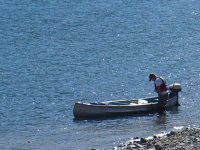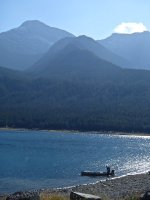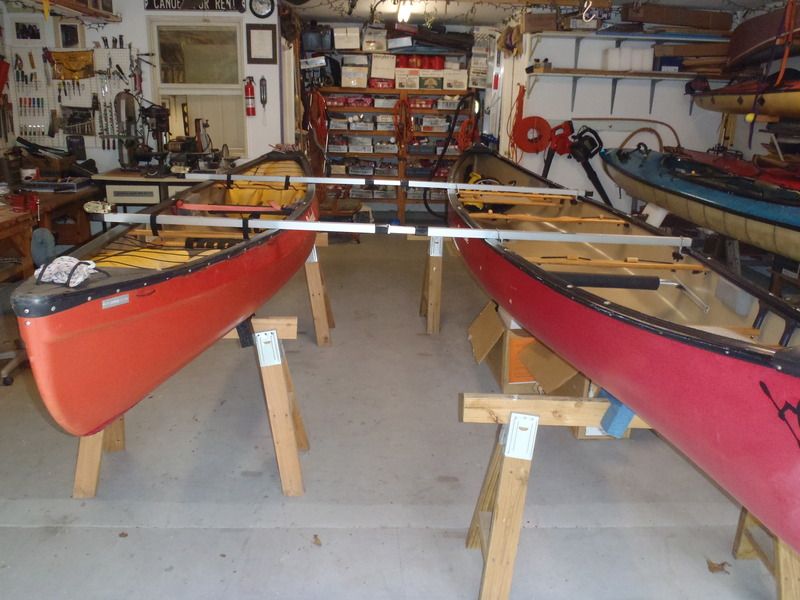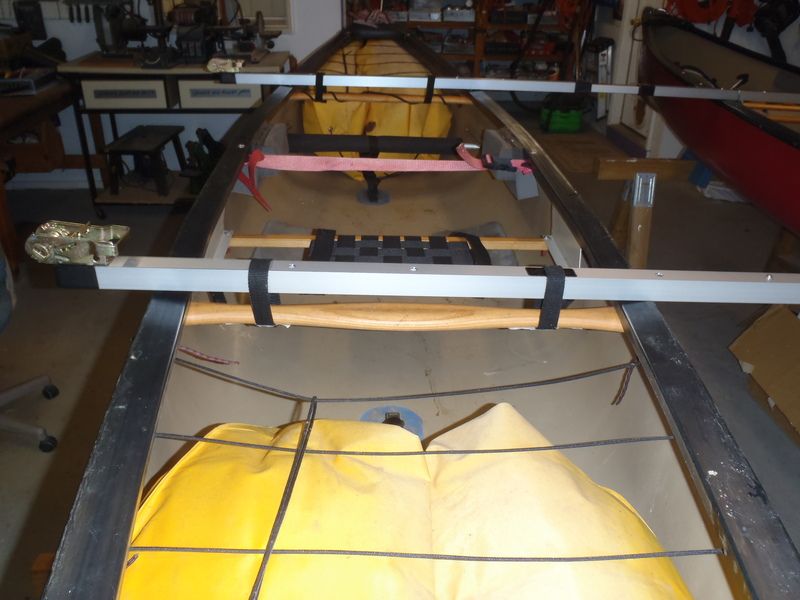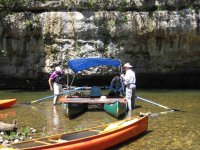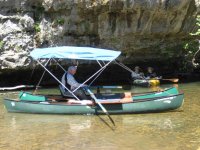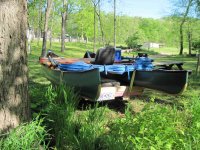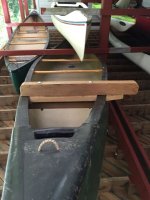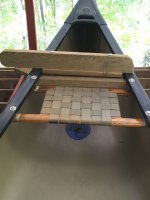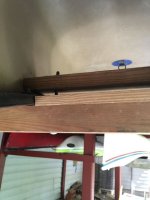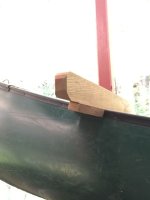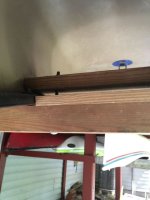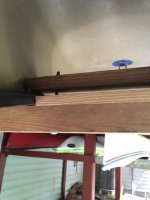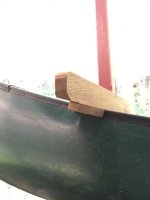I am psyched to get into this project. Too psyched; the boat, motor and driver probably will not come together until October.
OK, I’m too psyched to wait for the driver. I have the boat and motor, a spanking new Suzuki 2.5HP 4-stroke. Great reviews and only 29 lbs.
A test fit with the Suzuki hung off a tall sawhorse shows that it fits the 15” deep stern of the Freedom 17 (nee Revelation) perfectly, with the prop below the bottom of the hull. That was joyful revelation #1.

Next design question. For daytripping purposes, after motoring out to some distant camp, it would be advantageous to have an easier paddling solo boat attached as a (releasable) catamaran/ama.
And another chapter opens. Catamaran builds.
I have the boat and motor, and I have the iako’s. Or akas. Or – speak English dammit - crossbars. Cunningly crafted crossbars, manufactured by SpringCreek outfitters for just this purpose. I was going to wait for Joel to “try them on”, but ehhhh, I have a near empty shop, what the hell.
The manufactured crossbars provided joyful revelation #2.
Oh hell yeah; sturdy, KISS simple and adjustable. Three pieces per crossbar, all 4 feet long, which should fit nicely in, say, a snowboard bag for transport. I found a (sorry Joel) hideous floral pattern “women’s” snowboard bag on clearance.
The crossbars are double clamped on each side of the gunwales. Using those clamps allows the crossbars to be spaced as needed anywhere along the sheerline of the motor canoe, positioning the straps and minicel pads atop the kayak bulkheads. Or, if using a canoe as the ama boat, across the thwarts in that float boat.
Much better than having to lash them down atop the motor-canoe thwarts in a fixed location. I like it!
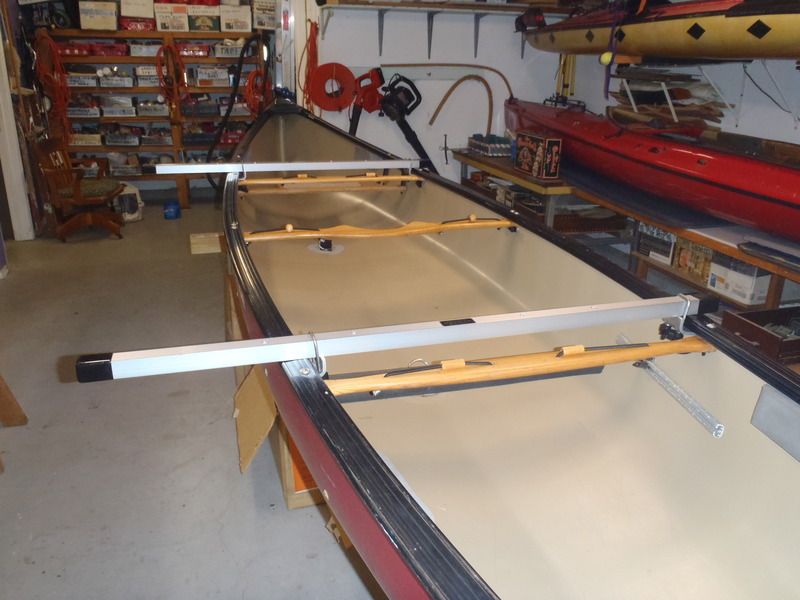
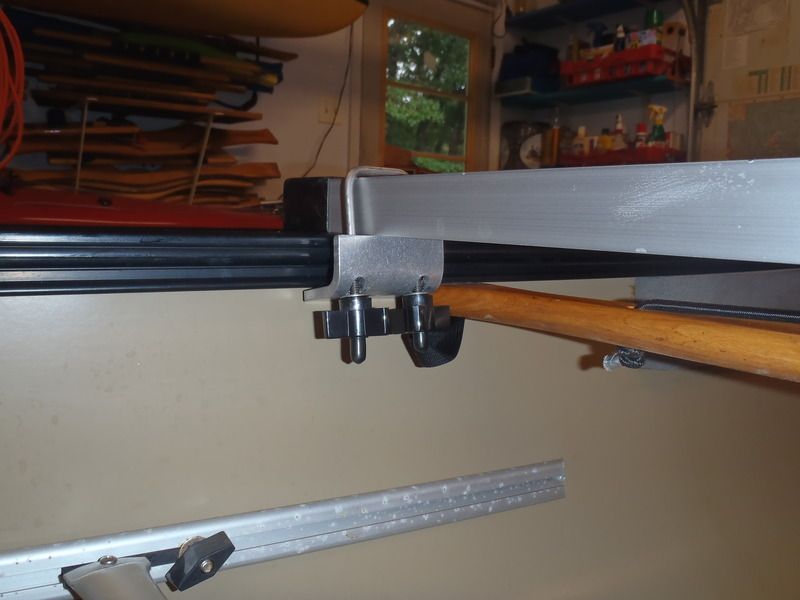
Internal sleeve bar with length adjustable thumb button clips ready to slide into the clamped motor-canoe bar.
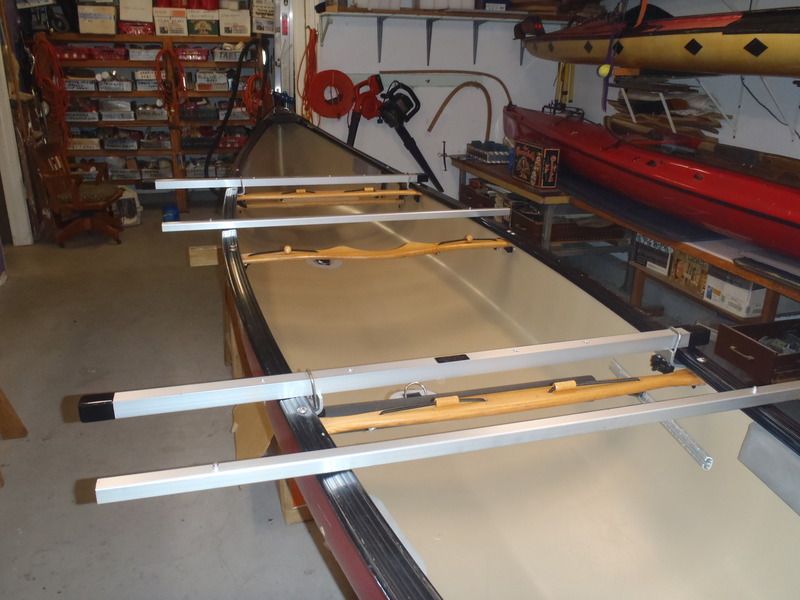
Outer bar sleeved in place with cam straps and minicel saddles. That is a 36 inch span between the boats, which looks about right to me, but it could be thumb button adjusted in or out in 6 inch increments. Those are 1 ¼ inch square bar, but they might still accommodate sundry Thule accessories. Hmmmm.. . . . . so many experiments yet to try.
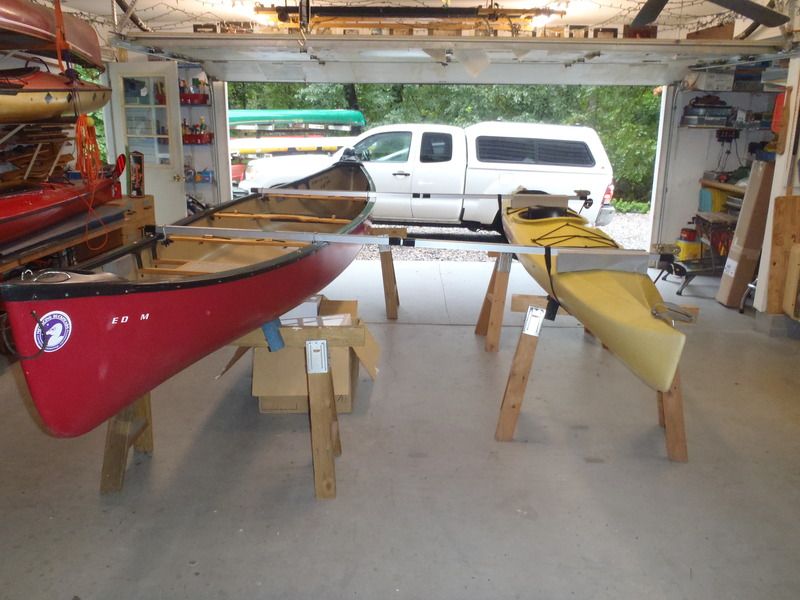
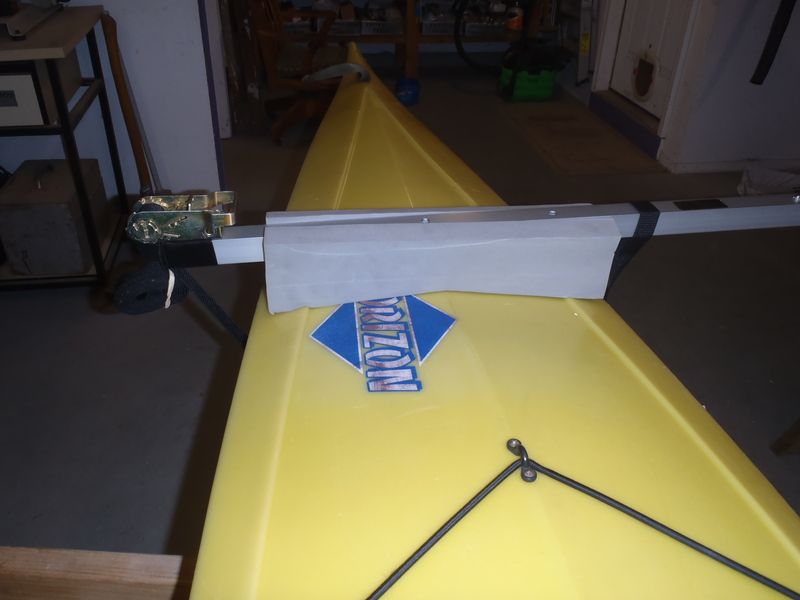
That design, with square aluminum stock, thumb button clips for length-adjustable sleeves, cams, straps and minicel saddles, was exactly what Joel had envisioned (and maybe not fully articulated; although sometimes I just don’t listen).
Thanks to Chuck at Springcreek for having thought through and resolved the construction method and material difficulties. That is a brilliantly functional design. I doubt we couldn have DIY’ed even crude crossbars without wasting time and money on several failed design attempts.
Cool beans, this will work. And the design of those Springcreek crossbars would easily accept a second set of crossbar extension off the unsupported side. Trimaran live-aboard with a fold out screen house/tent platform?
That probably won’t happen this shop session, but it’s a future target.

